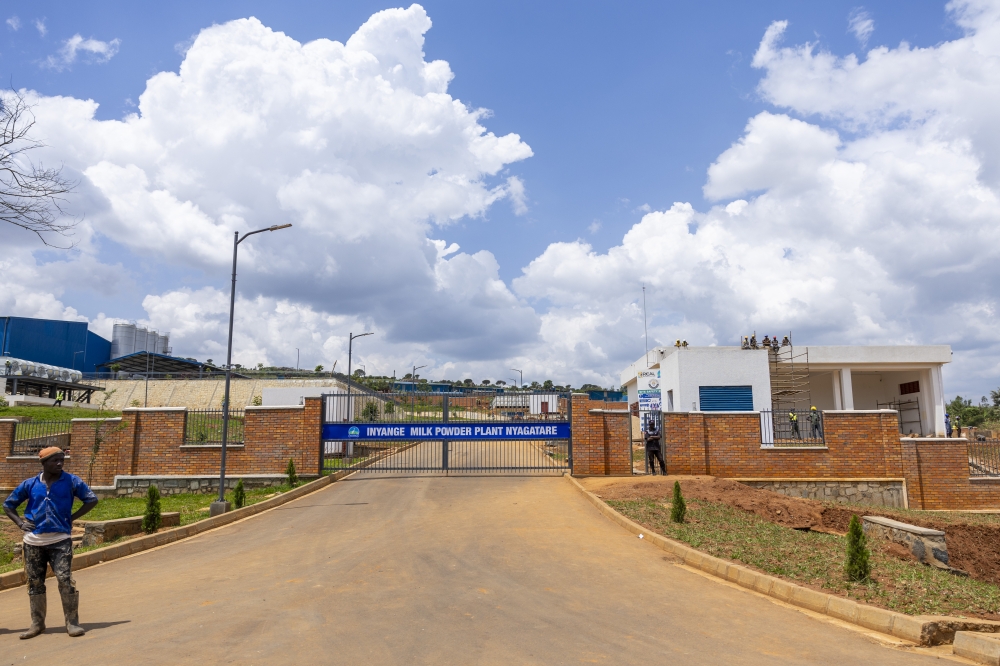

Rwanda’s first milk powder factory in Nyagatare District, Eastern Province, is expected to be launched by the end of July, The New Times has learnt.
The operations of the plant owned by Inyange Industries, Rwanda’s largest agro-processing firm, at an estimated investment of $45 million, were initially set to kick off in 2023.
"If nothing changes, the factory could be launched on July 24, 2024," a source told The New Times.
The plant will have capacity to process 500,000 litres of milk in liquid form into 50,000 kilograms (50 tonnes) of milk powder a day.
With that, its annual capacity will be around 15,000 tonnes of milk powder.
According to information from the Ministry of Agriculture and Animal Resources, the marketing plan includes securing an off-take contract from Africa Improved Foods (AIF) – a local major food manufacturer – for 2,000 tonnes annually.
However, the ministry indicated that over 80 per cent would be exported to neighbouring countries in the East African Community (EAC), Common Market for Eastern and Southern Africa (COMESA), and the Middle East, where there is more demand than supply can meet.
"This factory has a very huge impact. First, it will increase Inyange’s processing capacity to almost a million litres a day. That means almost Rwf9 billion that will be going to farmers per month, as the minimum price to a farmer is Rwf300 a litre,” Inyange Industries Ltd Managing Director, James Biseruka, told The New Times in 2023.


The Ministry of Agriculture ordered 70 percent of pastureland in the districts of Nyagatare, Gatsibo, Kayonza, and Kirehe, in Eastern Province, to be put under the cultivation of crops that provide cow fodder while 30 percent is set aside for cow sheds in a bid to enforce the zero-grazing system and increase milk production.
Eastern province has 10 large pastures on over 100 hectares, where cows providing 250,000 litres per day are being reared.
This strategy is coupled with modern technology of acquiring artificial insemination to get crossbreeds that would give the intended level of milk production after practicing better farming practices.
ALSO READ: Rwanda seeks to increase milk production by 34% in one year
The implementation of this initiative is an addition to various other interventions to increase milk production countrywide.
These include; forage cultivation and training of dairy farmers on appropriate technologies for forage preservation, as well as support to dairy farmers (especially those in areas mostly affected by drought such as in Eastern Province) to access water harvesting and preservation equipment through a subsidised scheme.
Other interventions include the maintenance of feeder roads in Gishwati milk sheds to enhance the collection and distribution of milk.
Rwanda will be producing 1,250,000 tonnes of milk every year by 2024, so as to satisfy milk demand.
As of 2021/22, Rwanda was producing 932, 951 tonnes of milk per year.
The recent cattle registration data (2022) indicates that 84 per cent of the cattle population estimated at 1,436,676 heads is made of improved dairy breed and/or their crosses.
The farmer’s access to artificial insemination services is also being enhanced through the provision of the same at the milk collection centre level.


